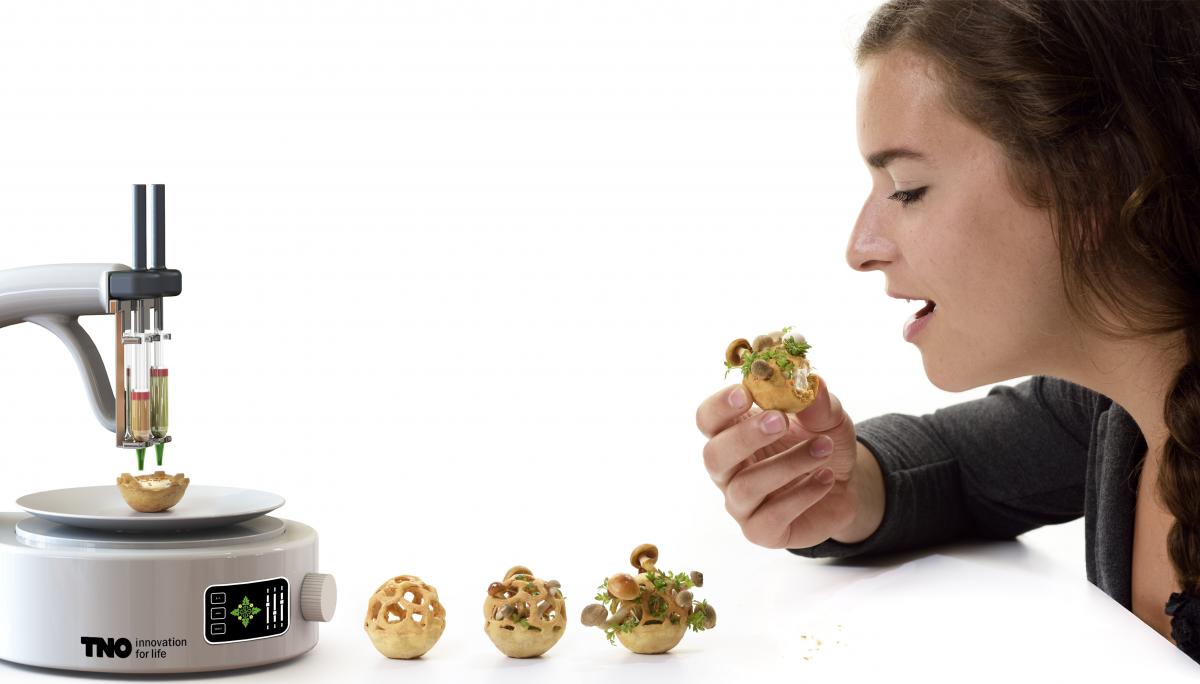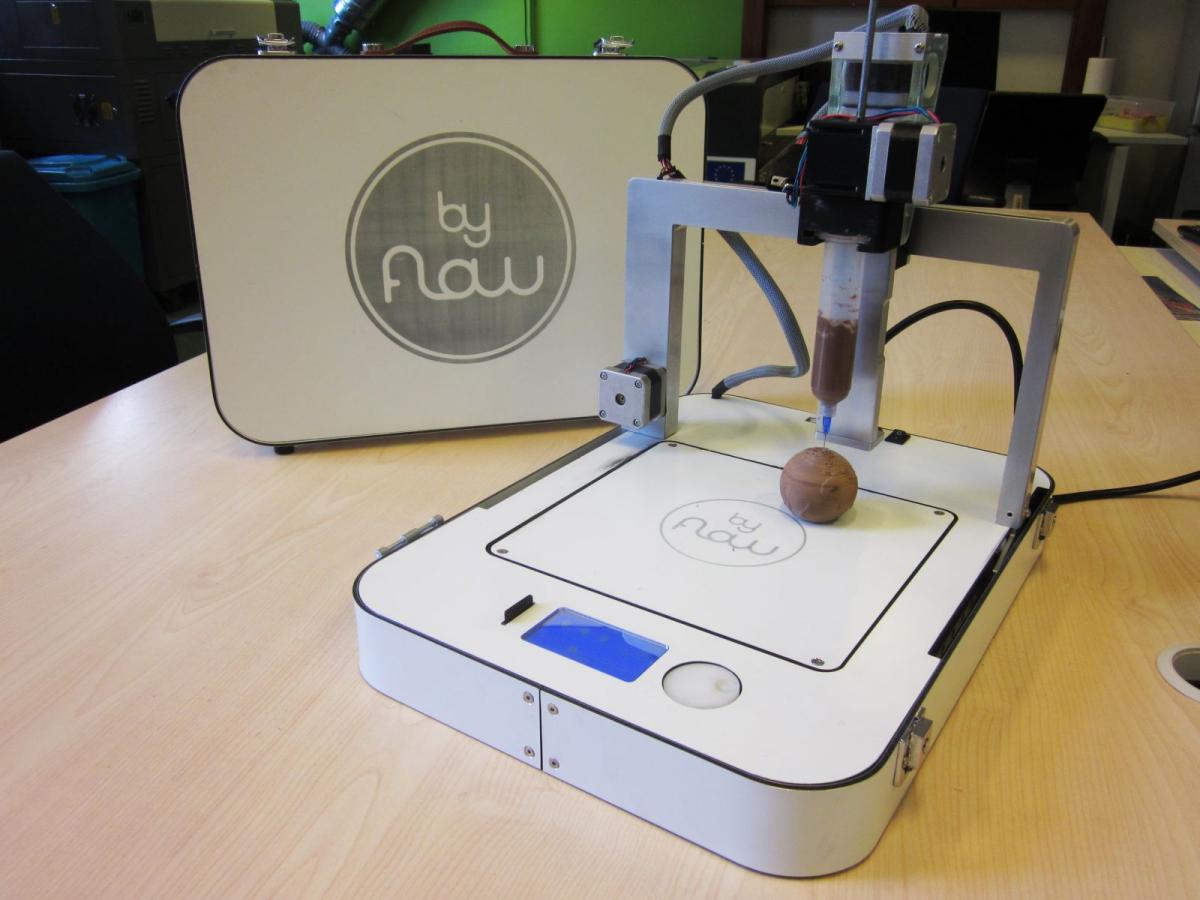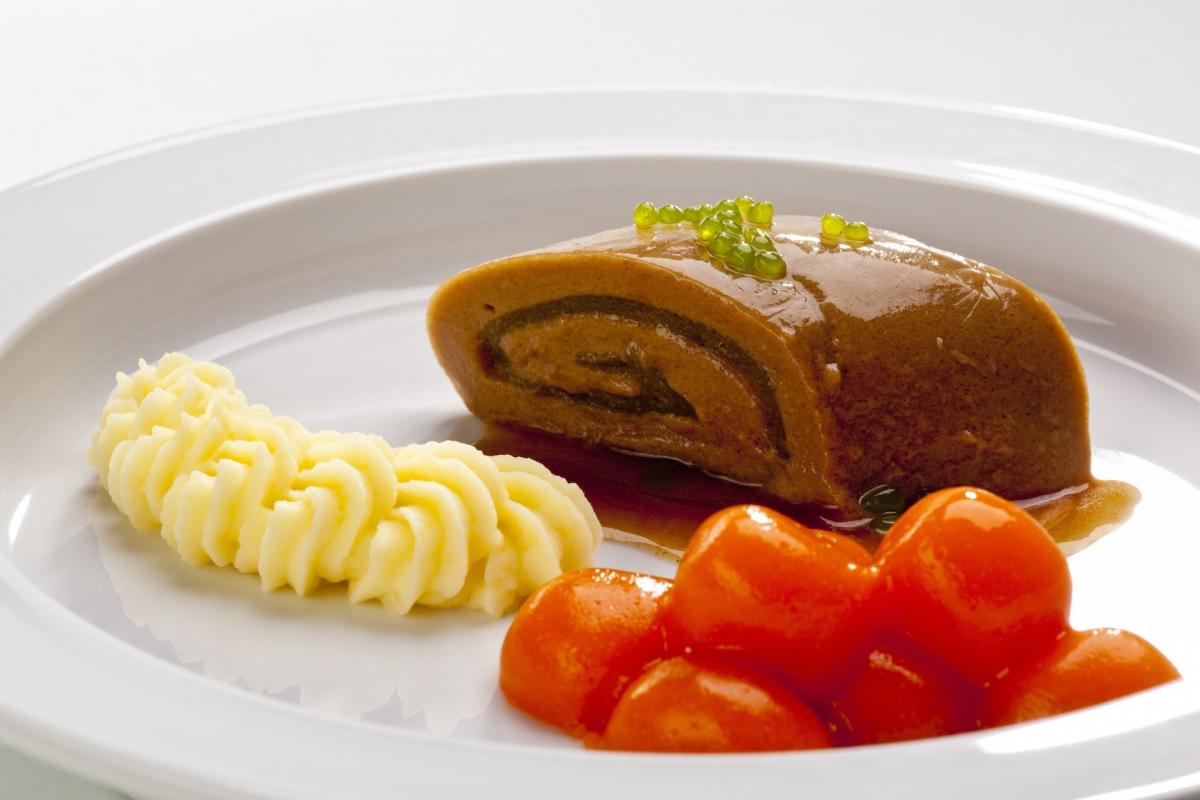ALSO known as additive manufacturing, 3D printing involves the repeated layering of viscous ingredients as varied as vegetables and meat, to cheeses and dough, to form solid comestibles, all based on information fed into the 3D printer from an SD card or computer. 3D-printed edibles defy common perceptions of being merely aesthetic creations – they increasingly offer novel solutions to pertinent food concerns.
The use of 3D printing materials is likely to experience the fastest growth in Asia Pacific, with countries like Japan and China rapidly embracing 3D food printing technology. Given Asia’s rising aging population, these technological advances will be critical to resolving many of the attendant nutrition challenges that beset the elderly. While consumers at large have yet to warm up to the idea of completely replacing traditional cooking with printed meals, continued developments and reductions in printer costs, however, show that we can count on 3D printed foods to find a place on our dining tables in the near future.
“The growing need for mass customization and healthier options, as well as calls for more efficient use of resources will drive the global market for 3D food printing. The Netherlands understands the limitless possibilities of 3D printed foods, and continues to build on its capacity to address significant issues such as food sustainability, wastage, and malnutrition, that affect populations everywhere,” says Elmar Bouma, Executive Director-SEA of the Netherlands Foreign Investment Agency (NFIA) based in Singapore.

Elmar Bouma, Executive Director-SEA, NFIA
Part of the bigger 3D printing market predicted to reach at least $7 billion by 2025, 3D food printing is receiving much hype for its potential to revolutionize food production. Advances in printing techniques are expanding the vast opportunities of the technology, introducing new manufacturing methods that are expected to shorten food supply chains, and enhance nutritional customizability and food sustainability. Considering that one-third of food produced worldwide for human consumption (1.3 billion tonnes) is discarded annually, 3D food printing which involves the deposition of materials only where needed and on demand, could contribute to curbing food wastage, while bringing high-tech, substantial meals to more people.
Research into boosting food sustainability has since resulted in the development of a wholly edible 3D printed ecosystem. The collaboration of Dutch industrial designer Chloé Rutzerveld with the Eindhoven University of Technology and the Netherlands Organization for Applied Scientific Research (TNO) through the Edible Growth Project looks to explore the possibilities of combining natural growth and technology to sustainably breed nutrient-rich foods. Here, micro-organisms with probiotic benefits like seeds, fungi and yeast are deposited into an edible 3D-printed matrix that doubles up as the soil where mushrooms and plants like alfalfa can grow. It takes less than a week for the plants and fungi to mature, continually intensifying in structure, aroma and taste, right till the time they are consumed.

The Edible Growth project involves creating a fully edible 3D printed ecosystem for growing sustainable nutrient-rich foods
Most 3D food printing developments today are centered in Europe, catering to a market that is steadily familiarizing itself with these high-tech foods. European supermarkets are already looking into supplying customized 3D printed desserts, while several 3D food printer companies are hoping to introduce the technology into domestic settings. Fronting this revolution is the Netherlands, known for its ground-breaking initiatives and inventions that combine design know-how with food, to create shapes, tastes and textures, never before produced, in conventional kitchens and eateries.
“Though still in its early stages, 3D food printing offers exciting prospects, and prompts approaches that continually challenge the very ways we interact with food. Backed by an innovative culture, the Netherlands similarly endeavours to power food-related developments using tomorrow’s technologies,” says Mr Bouma. The NFIA offers complimentary consultations to companies planning to establish, expand or diversify their business operations in the Netherlands and Europe.
Quick portable foods
As pioneers in 3D printing, the Dutch are aware of the technology’s constraints in its application in the food industry – from the printers’ limited use of ingredients to the public’s general preference for traditionally made foods. Yet, Eindhoven-based company byFlow sought to break down those barriers when it introduced the portable, multi-material Focus Printer, making 3D food printing as convenient and practical as possible.
Weighing seven kilograms, byFlow’s 3D printer comes in a compact suitcase for easy transportation. Upon unfolding, the machine can be set up in 20 seconds and is ready for use within two minutes. Its interchangeable extruders are capable of 3D printing recycled materials, filaments and paste, and can be easily and quickly replaced for the next print job. Having successfully tested with oft-used ingredients like hummus and chocolate mousse, the printer can even accommodate freeze-dried vegetables and fruit that have been converted into powder and mixed with agar-agar (jelly) to make a 3D printable paste. Pre-seasoned meats in paste form can likewise be 3D printed and afterwards, baked, steamed or cooked over a grill.

byFlow’s portable Focus Printer has interchangeable extruders for 3D printing recycled materials, filaments and paste
The Focus Printer demonstrates how a wide range of ingredients can be adapted for 3D printing. The customizability of each print job also allows consumers to modify food mixtures and personalize the nutritional value and portion of their meals. For those with specific dietary needs or health conditions, these 3D printed edibles offer feasible alternatives in line with regulated food plans.
The Pop-Up experience
While 3D food printing has its appeal, its lack of exposure remains the biggest stumbling block to having 3D printed foods be seen as more than a novelty. In efforts to acquaint people with the technology, byFlow initiated the conceptual pop-up dinner series called Food Ink. The pop-up showcases utensils, furniture and food entirely constructed with 3D printing. These temporary restaurants are helmed by an international team of chefs and designers who, with the help of augmented reality, create an interactive experience for visitors, promising a treat for the senses.
Following the huge success of the first pop-up in Venlo in the Netherlands, the founders are embarking on a global tour to present their concept to cities like Barcelona, Paris, Las Vegas, Tokyo, Singapore, Sydney and Seoul. Just recently, a nine-course dinner was 3D printed live and served to guests at a restaurant in Shoreditch, East London. The dining experience was also live-streamed through their website Foodink.io.
As Mr Bouma points out, “By bringing the event up close to consumers, the travelling “pop-ups” set the stage for conversations about sustainable food and nutrition, as well as how emerging technologies are transforming the way we eat, share and live.”
Smooth palates
3D food printing is enhancing the eating experience for a specific group of consumers, in particular, the elderly. Afflicted by chewing and swallowing problems, many senior citizens have to contend with mashed, bland foods. In Europe, a viable solution has come in the form of the Personalized Food using Rapid Manufacturing for the Nutrition of Elderly Consumers (PERFORMANCE) project, where countries like the Netherlands, Italy, Denmark and Austria are joining forces to develop foods that are personalised to meet the nutritional and serving requirements of each elderly patient.
Biozoon in Germany is spearheading the project and its focus on food innovation has led to the creation of Smoothfoods, made with pre-cooked, raw, fresh, and frozen foods that are puréed, 3D printed and congealed with edible glue. The final product replicates the original dish in appearance and texture, allowing the elderly to enjoy classics like gnocchi and everyday fare like peas, broccoli and carrots. Before the food order is 3D printed, the PERFORMANCE concept uses an algorithm program which monitors the nutritional value required by each patient on a weekly basis, while other European-based enterprises help with the packaging and set-up of the program. Today, the Smoothfoods line of nutritious meals is served in some 1,000 German nursing homes daily.

Smoothfoods are made from pre-cooked, raw, fresh, and frozen foods that are puréed, 3D printed and then congealed with edible glue. Designed for the elderly, they are much easier to chew and swallow
Protein-rich foods
Everyday foods like dairy products are similarly evolving in tandem with the progress of 3D food printing. Wageningen University is working with FrieslandCampina, a Dutch dairy cooperative, to bring to the market, 3D printed protein-rich foods that not only retain the original texture of natural cheese, milk or butter, but the nutritional content as well.
Sodium casein, a high-quality protein found in mammalian milk, features prominently in these 3D printed foods. Making up 80 percent of the protein in cow’s milk and acting as the main protein source in commercial cheeses, sodium casein is a suitable printing material which solidifies upon extrusion. While other ingredients need to be added into the mix to ensure that the end result matches the original dairy product’s flavour and texture, these 3D printed foods are nonetheless high in protein and low in fat, providing individuals with more essentials within the same portions.
For more information on 3D food printing innovations or investment opportunities in the Netherlands, contact: Mr Elmar Bouma, Executive Director-SEA, the Netherlands Foreign Investment Agency (NFIA), Tel: +65 6739 1135, Email: bouma@nfia-singapore.com or Ms Adeline Tan, Country Manager, Tel: +65 6739 1137, Email: tan@nfia-singapore.com or visit www.investinholland.com.
Air Zoom Vomero 13













